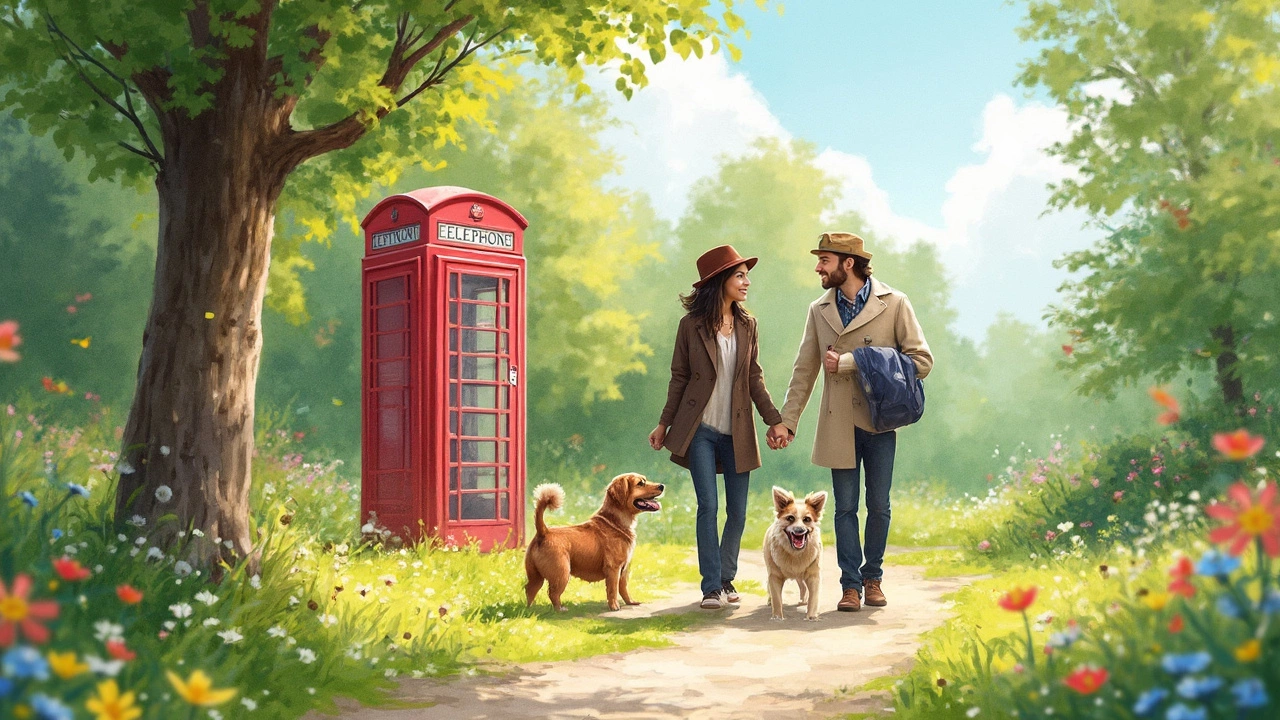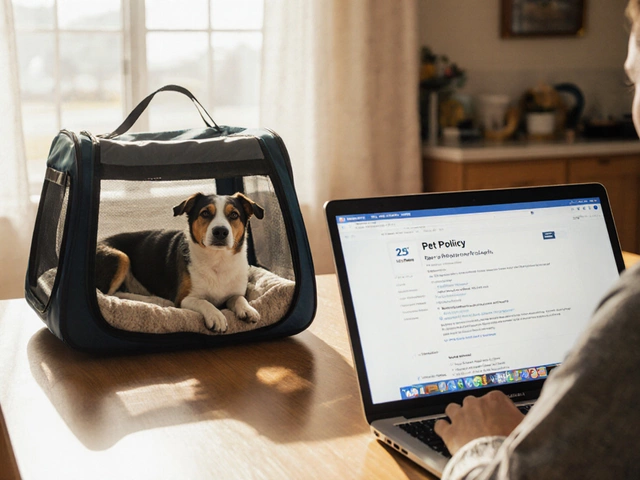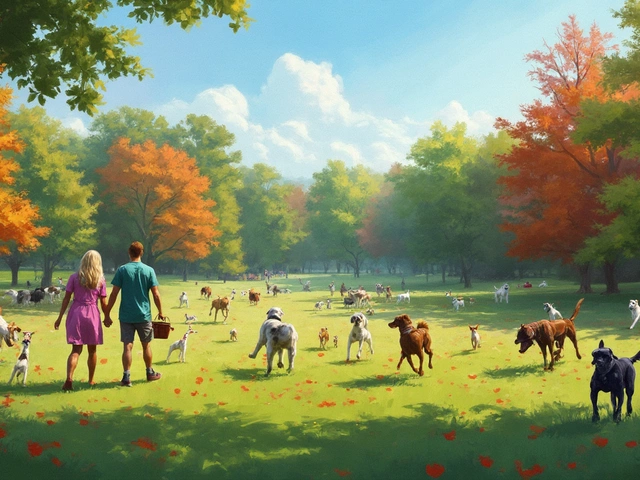There’s nothing quite like those wild puppy zoomies or the way a puppy tries to eat your shoes, your plants, and maybe your socks…all before breakfast. But at some point, your puppy starts to change and suddenly, you’re dealing with a bigger, bolder, more independent pup. Figuring out exactly when your puppy stops being a “puppy” doesn’t have a simple answer, though—it all depends on things like breed, size, and even your dog’s unique personality.
For most dogs, the process happens way faster than you think. Small-breed pups might finish up puppyhood at 9 to 12 months, while giant breeds can take as long as 18 to 24 months before they truly feel grown up. So, if you’re wondering when to switch their food, change up training routines, or start expecting calmer behavior, it really helps to recognize the signs your puppy is maturing.
- How Puppies Grow: Timeline by Age
- Breed Size and Growth Differences
- Signs Your Puppy Is Becoming an Adult
- Why Knowing the Cutoff Matters
- Tips for Transitioning to Adult Dog Care
How Puppies Grow: Timeline by Age
Puppies grow up faster than you might think, and there’s a clear timeline most follow on their way to adulthood. At birth, puppies are basically helpless—eyes shut, ears closed, and all they do is eat and sleep. By 2 weeks, their eyes crack open and they start getting curious about the world.
From 3 to 4 weeks, wobbling around turns more into actual walking, and you’ll notice them barking and play-fighting with their littermates. Things really pick up during the puppy age of 8 to 12 weeks. This is when most puppies go to their new homes, and it’s a crucial time for socializing, potty training, and learning simple commands. Imagine it as their preschool stage—everything is new and a little bit chaotic.
Between 3 and 6 months, puppies lose their baby teeth (so if you find tiny teeth on your floor, don’t freak out), and start to look more like mini versions of adult dogs. They’re full of energy, love to chew, and test their boundaries—a lot. This is also an important period for deeper training and gentle exposure to new people and places.
The 6- to 12-month stretch is where you’ll notice bigger changes. Most small breeds start to look fully grown, but they can still act super silly. Medium breeds keep growing until closer to 12 months, while large and giant breeds are far from done—they can keep packing on muscle and height past their first birthday, sometimes even up to 2 years old.
- 0-2 weeks: Eyes and ears closed; totally dependent.
- 2-4 weeks: Eyes open, first steps, starting to play.
- 4-8 weeks: Socializing with littermates, learning from mom.
- 8-12 weeks: Go-home age, critical for socialization and early training.
- 3-6 months: Teething, basic obedience, growing steadily.
- 6-12 months: Hitting the teenage phase, some reach adult size, habits start to settle.
- 12-24 months (giant breeds): Still growing and maturing mentally and physically.
Knowing this timeline helps a ton with everything from picking the right food to figuring out the ideal time for training classes. If you’re ever unsure what stage your pup is at, check with your vet—they can tell you what to watch for and how to support healthy growth.
Breed Size and Growth Differences
Not all puppies grow up at the same speed. The size of your dog’s breed plays a huge role in how long they’ll stay puppy-like. Most small dog breeds hit full maturity much earlier than medium, large, or giant breeds. This might sound wild, but a Chihuahua is basically done growing by their first birthday, while a Great Dane still has some puppy energy well past their second.
For an easy look at how growth works by breed size, check out the table below:
| Breed Size | Average Puppy Period | Common Examples |
|---|---|---|
| Small | 9-12 months | Pug, Dachshund, Shih Tzu |
| Medium | 12-15 months | Beagle, Border Collie, Bulldog |
| Large | 15-18 months | Labrador Retriever, Golden Retriever, Boxer |
| Giant | 18-24 months | Great Dane, Mastiff, St. Bernard |
The development difference is big. Small breeds can be switched to adult food sooner and may outgrow puppy antics pretty quickly. In contrast, big and giant pups need longer with puppy age diets since their bones and joints are still developing well into the second year.
Size also affects training challenges, exercise needs, and that infamous clumsy phase. Large breeds often have a long “awkward teenager” stretch where they might look grown up but still act like puppies. Medium breeds usually grow at a middle pace, so their “I’m a puppy, but not really” phase is less dramatic.
So, if you’re tempted to compare your Yorkie’s progress to someone’s Irish Wolfhound or vice versa, stop right there. Dogs grow on their own schedule, and breed size is your best clue on what to expect.

Signs Your Puppy Is Becoming an Adult
Think your puppy is heading for adulthood? Puppies rarely just wake up one morning and act like full-grown dogs. Instead, they go through a bunch of changes—physically, mentally, and emotionally—that add up over time. Here’s what you’ll probably notice as your pup crosses that invisible line.
- Puppy age matters, but you’ll also spot the difference in their looks. Adult fur replaces the soft, fluffy puppy coat. Sometimes, their color actually changes or gets a bit darker or lighter.
- Teeth are a big clue. By around six months, all permanent teeth have pushed through, and your puppy stops being so obsessed with chewing. (Your shoes might finally catch a break…)
- Mature puppies start to show more self-control. Less wild jumping during greetings, less nipping, and a little more patience—well, as patient as dogs get. Training tends to get a bit easier, too, because their brains are ready to focus for longer.
- Body shape changes. Puppies look chunky and awkward when young, but when they grow up, their legs look more proportional and muscles fill in. With large dogs, this can be a long process, sometimes taking up to two years.
- Sudden energy dips and growth spurts can happen. If your puppy’s zoomies slow down and you notice them chilling more often, take it as a hint adulthood is near.
Want some numbers to make this less mysterious? Here’s a quick snapshot of typical milestones by breed size:
| Breed Size | Adult Teeth By | Physical Maturity | Behavioral Maturity |
|---|---|---|---|
| Small | 6 months | 9–12 months | 9–12 months |
| Medium | 6–7 months | 12–15 months | 12–18 months |
| Large | 6–7 months | 15–18 months | 18–24 months |
| Giant | 7 months | 18–24 months | 24+ months |
The main thing: every puppy is different. Your dog might be full grown by a year, or stay in that “troublemaker” teenage phase until two. Just keep an eye on these signs, and you’ll know—you don’t need a calendar to figure out when your puppy is becoming an adult.
Why Knowing the Cutoff Matters
If you’re not sure when your pup officially turns into an adult, you could end up making mistakes that affect their health or training. The age when a dog leaves the puppy stage isn’t just a cute milestone—it actually impacts how you feed, exercise, and care for them. This is especially true with food, since puppy-formulated kibble is loaded with more calories, protein, and nutrients meant for rapid growth. Stick with it too long and you risk weight gain or joint issues. Switch too soon and your pup might not get enough of what they need for strong bones and teeth.
It also matters for training and socialization. Puppies have a critical “socialization window” that shuts by about 16 weeks. If you know your dog’s puppy age, you can time things like puppy classes, meeting new people, or exposing them to new places during their most open, curious phase. Miss that window, and behavior problems can creep in later.
Vet care is another biggie. Puppies need vaccines in a set schedule, and your vet will plan shots, boosters, and deworming based on their age and development. Here’s how those checkups usually line up by months:
| Dog Age | Vaccine/Milestone |
|---|---|
| 6–8 weeks | First core vaccines |
| 10–12 weeks | Booster shots, deworming |
| 16 weeks | Final puppy shots, rabies |
| 6–12 months | Switch to adult food, spay/neuter timing |
Lastly, knowing your dog’s stage helps set expectations for behavior. If you expect perfect manners from a six-month-old lab, you’re basically asking for frustration on both sides. Understanding what’s normal for their age helps you stay patient and adjust your training style as they grow up.

Tips for Transitioning to Adult Dog Care
Once your dog starts leaving those puppy days behind, your routine needs to level up too. It’s not just about swapping out toys—there are some real changes ahead, especially when it comes to food, exercise, and regular checkups.
First up: food. Puppy food is packed with extras for growth. When your vet says it’s time (often around 12 months for small breeds, up to 24 months for giant breeds), switch to an adult formula. Do this slowly over a week: mix a bit of the new food with the current puppy food, upping the amount each day. This helps avoid tummy trouble.
- Puppy age matters: get your vet’s advice before changing food or routines. Every breed and individual grows up at a different pace.
- Move training to the next level. Adult dogs need mental challenges, not just "sit" and "stay." Try puzzle toys, scent games, or simple agility obstacles in the backyard.
- Rethink exercise. Puppies burn off energy in quick bursts, but adults need longer, steady walks and lots more play to stay fit. For large breeds, don’t overdo hard activity till bones are mature—ask your vet what’s right for your dog’s age and body type.
- Don’t skip health checks. It’s easy to forget, but once-a-year vet visits keep your dog on track, with regular shots, dental checks, and early health screening (especially for larger breeds that are prone to joint or heart issues).
- Routine matters. Keep walk times and bedtime steady, but expect your young adult pup to test boundaries. Stay patient, use positive reinforcement, and keep practicing old skills—just add new ones for a smart, busy mind.
As your dog finds their grown-up groove, these changes make a big difference. Small tweaks now mean a healthier, easier, and happier life together for the long run.





